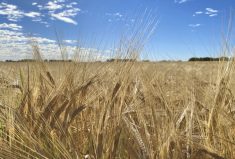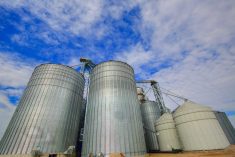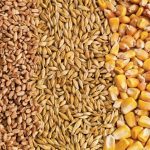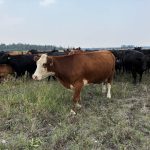Recently I was eating my breakfast in Sydney, listening to the Australian barley industry make its pitch to potential buyers in Ecuador. The pitch was being made over Zoom, and it was all in Spanish and English with simultaneous translation.
Such is the approach of Australia’s barley growers and their representative groups in an environment where Aussie trade with China has been severely impacted. In fact, AEGIC, one of the seminar organizers, is expected to deliver more than 15 such seminars over the next year promoting Australian malting barley.
Barley in Australia
Read Also

What to consider when setting up farm-related business ventures
Things to consider before launching a farm-adjacent side business.
Barley, grown extensively in the southwest and the southeast of the continent, is second only to wheat for volume exported from Australia. Indeed, the relatively even spread of barley growing across five major states is one of the strengths of the industry. All up, barley accounts for almost a quarter of total southern winter grain production for the Aussies. And this year has been a big one, especially in Western Australia.
Australian government agency ABARES recently estimated 2021-22 barley production at 13.3 million tonnes, up 2 per cent from last year and just shy of a record set in 2016. After Russia, Australia ranks as the world’s second-highest barley producer and the world’s largest exporter of the grain. More than half of Australia’s barley goes into livestock feed rations, with the rest used by beer brewers and whiskey distillers.
The role of AEGIC
The Australian Export Grains Innovation Centre (AEGIC) has been an important factor in that success. AEGIC is a driving force behind grain research, connecting with international markets and offering another important contact point for the barley growers. With AEGIC’s help, export markets for 2020-21 have quickly diversified, switching potentially large volumes to markets such as Saudi Arabia, Japan, Thailand and Vietnam.
AEGIC is an independent, not-for-profit company established in 2012 to increase value in the Australian grains industry. It is an investment of the Australian government through the Grains Research and Development Corporation (GRDC), and the Western Australian state government through the Department of Primary Industries and Regional Development (DPIRD).
Facilities include research laboratories, a pilot mill, a pilot bakery and commercial analytical laboratories. AEGIC also works co-operatively with Barley Australia, the representative body. Barley Australia is said to strike a good balance between innovation and consistency.
Issues with China
Last year, China placed a five-year 80 per cent tariff on Australian barley, which effectively ended the trade for the moment. Typically, at least half of Australia’s barley exports would be bound for China, trade that was estimated to be worth $1.5 billion in 2018 but due to drought fell to $600 million in 2019.
In a statement announcing the decision, China’s Ministry of Commerce said it conducted an investigation in strict accordance with China’s relevant laws and regulations. It said the anti-dumping tariff would be 73.6 per cent, while the anti-subsidy tariff would be 6.9 per cent.
Expanding export horizons
In 2020, AEGIC’s barley markets manager Mary Raynes said it was important for Australian barley growers to have access to a diversity of markets to reduce reliance on a single dominant buyer.
Apart from the Ecuador presentation that I tuned into over breakfast, the industry has also made recent video pitches to India and to African nations such as Ethiopia. The scramble to find new markets to cover the reduced exports to China appears to have been remarkably successful.
For example, one wouldn’t immediately think that there is a growing demand for malting barley in a market like Vietnam. But Vietnam is a surprisingly robust beer drinking market, and AEGIC identified the opportunity to double exports of malting barley by 2030. Vietnam in fact is the largest per capita beer consumer in southeast Asia, and the trade is predicting that Vietnam’s malting capacity will continue to increase.
What about bigger markets? Competition among Japanese breweries in the market is driving innovation in the sector to make more effective use of lower-cost ingredients. Australia believes this may provide opportunities for Australian and other cheaper-origin malts to gain market share at the expense of higher-priced alternatives.
As well, although the Saudi Arabian government continues to increase the use of domestically processed compound feed instead of imported raw barley, there remains a degree of resistance to this change, particularly among some Bedouin producers who have maintained the historical practice of feeding unprocessed barley to their livestock.
It’s widely thought Saudi Arabia is the only accessible market capable of taking the volume of Australian barley displaced by Chinese tariffs.
Traceability
AEGIC has done some heavy lifting, but there remain questions for the farmer about how to approach their business. Direct purchase agreements with brewers are increasing, and there’s a small emerging interest around issues like sustainable production.
Indeed, there appears to be increasing interest in issues like provenance. For example, in relation to malt barley, a company called Pure Grain has reportedly built a comprehensive database on about 20 per cent of Australia’s malt barley crop destined for brewers.
Representation
Overall, farm and industry interests in Australia can appear somewhat better integrated than in Canada. For instance, in Alberta the proposed amalgamation of the provincial wheat and barley commissions has had a bumpy ride, with many concerns that smaller barley producers might get squeezed by the bigger wheat crop in any amalgamation.
Down under, as well, the overall approach to barley innovation has become more corporate, especially in Western Australia. InterGrain Pty Ltd. was formed in October 2007 when the Western Australian State Government and the Grains Research and Development Corporation (GRDC) elected to privatise the long-standing and highly successful Department of Agriculture and Food Western Australia wheat breeding program.
Corporatization of the wheat and barley programs was consistent with the Australia-wide trend to encourage private sector investment in plant breeding.
InterGrain develops new barley varieties. In 2021 they developed a successor to Spartacus named Maximus CL, an imidazolinone (imi) tolerant barley variety. Quality-wise, Barley Australia has said Maximus is a high fermentability variety, well suited to the export market.
Lessons for Canada
One thought that keeps recurring is that in many respects Canada has competitive advantages in this area, but right at the moment, Australia is showing more hustle. This is something Canada could easily address, though, and Canada could quickly retake the lead on the hustle side of the equation.
In the meantime, however, there are many questions around how Canada will approach barley growing and exports. As Jeff Melchior’s recent article in County Guide shows, the barley business can be a tricky one. One question is whether Canadian barley has placed too many eggs in the malting-barley-for-China basket, given the geopolitical uncertainties around that part of the export trade. And the other big question is whether there is potential for greater co-operation between the western prairie provinces when it comes to promoting the barley grown in Western Canada.
Finally, as an adjunct to barley, it is interesting to note that hops producers are also doing well in Australia. In the absence of U.S. competition, the industry seems to be more commercially viable than in Canada.
Overall, the Australian hops growing industry is about two and a half times the size of its Canadian equivalent, although it shares the issue of barriers to entry to new players in the area.















